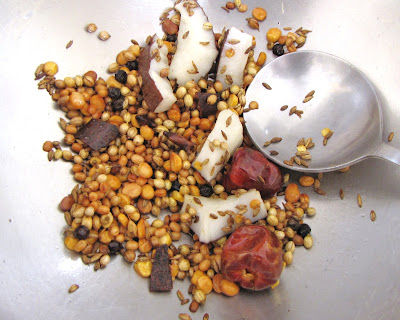I first saw these pocket breads
in some TV show and liked its look appeal. Since then, I’ve been wanting to
prepare this but in the local store I could not procure yeast; then one day
when I got to buy some active yeast, I was more than excited to try it out. This turned out very fine and we just loved it.
Ingredients:
1. Wheat flour - 2 cups
2. Yeast - 1 tbsp
3. Salt to taste
4. Tomato slices - 6
5. Onion slices - 6
6. Boiled chickpeas - 1/2 cup
7. Cabbage - 1 cup shredded
8. Cheese spread or mayonese - 4 tbsp
9. Mint - few sprigs
10. Crushed pepper - 1 tsp
Method:
Step 1: Mix atta with yeast, salt and water and leave aside for an hour
Step 2: Roll into roti like breads (slightly thicker) and roast on tawa; they will puff fully. Cut them into halves to get semi-circular pockets.
Step 3: T make the sandwich, just stuff the pitta pockets with tomato slices, onion slices, few salted & boiled chickpeas, cabbage juliennes, smear some cheese spread or mayo and sprinkle salt and pepper.
Step 4: Garnish with mint leaves and serve.

























